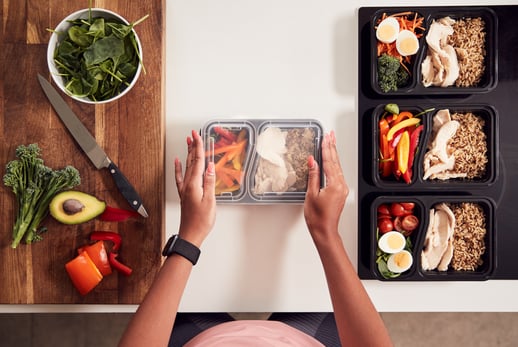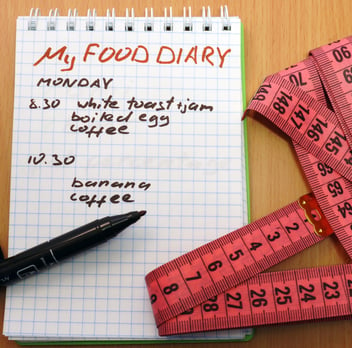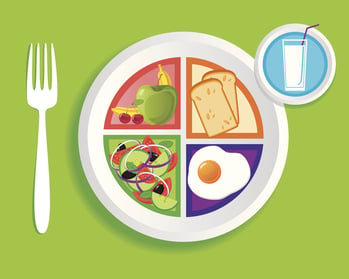 Are you hoping to start meal prepping to allow for more time during the weeknights? Meal-prepping is a great way to ensure you are eating a well-balanced diet, even when you are on a time crunch throughout the week. It can be a daunting and time-consuming task at first, so here are a few tips to get you started.
Are you hoping to start meal prepping to allow for more time during the weeknights? Meal-prepping is a great way to ensure you are eating a well-balanced diet, even when you are on a time crunch throughout the week. It can be a daunting and time-consuming task at first, so here are a few tips to get you started.
Organize your meal plans ahead of time and go grocery shopping ONCE.
First things first, decide what you want to prepare. Search through cookbooks or Pinterest for healthy meals that will reheat well. Write all of the required ingredients on your grocery list so that you only need to go shopping once. Once prepared, store your food in glass storage containers, if possible. Your food will reheat more evenly, and your hormones will thank you later!
Start small.
Instead of trying to prep EVERY meal for your entire week, start with just a few meals! If there are a few days of the week that you know will be busier than the rest, prioritize having meals ready-to-go for those specific days. As you get comfortable doing a few meals a week, you can decide whether you want to prep a little more at a time. It doesn’t have to be all or nothing!
Prioritize protein and vegetables.
Protein is key both for weight loss AND for gains. Choose proteins such as chicken breast or thighs, ground turkey, salmon, tuna, cod, beef, or even plant-based options such as quinoa, chickpeas, and beans. Incorporate plenty of colorful vegetables and healthy fats such as avocados, nuts, seeds, and cooking oils such as grass-fed butter, avocado oil (for high-heat) and olive oil (for dressings and low-heat). Sprinkle in complex carbohydrates full of fiber such as brown rice, quinoa, white or sweet potatoes with the peel, or orzo.
Keep lots of spices on-hand!
When you prep meals ahead of time, it may not take very long to get tired of eating the same foods. If you have a variety of spices in your kitchen ready to go, it can be a fun way to keep your meals new and exciting. This is a great time to experiment with seasonings such as curry, sazón, chimichurri, and more!
Prep your pantry with healthy snacks, too.
While pre-packaged foods are easy-to-grab, they often don’t provide many nutrients. Cut up some fruits and vegetables at the start of the week for grab-and-go snack options. Do the same with nuts and seeds – and put them all in easy, one-portion storage containers.


 Best Weight-Loss Techniques
Best Weight-Loss Techniques
 We see it, we eat it. Usually that’s how it goes, right? Of course we eat too much, but is it really our faults? Well, unfortunately for Americans, the portion distortion mania has gotten out of hand—and so has obesity. Over time, we’ve gotten so used to the larger portions being served at restaurants, we’ve come to think this is normal. Then of course that thinking spills over into a food addiction at home, too. More food, more food, more food. The craziness needs to stop now! (Here are
We see it, we eat it. Usually that’s how it goes, right? Of course we eat too much, but is it really our faults? Well, unfortunately for Americans, the portion distortion mania has gotten out of hand—and so has obesity. Over time, we’ve gotten so used to the larger portions being served at restaurants, we’ve come to think this is normal. Then of course that thinking spills over into a food addiction at home, too. More food, more food, more food. The craziness needs to stop now! (Here are 
 Have you fallen off track from your New Year’s resolutions and need a kick start back in the right direction? Since it's National Nutrition Month® it is the perfect time to regain focus on healthy eating behaviors! Getting back into a healthy routine does not mean seeking out the next fad diet, but learning to enjoy healthy and nutritious food. The
Have you fallen off track from your New Year’s resolutions and need a kick start back in the right direction? Since it's National Nutrition Month® it is the perfect time to regain focus on healthy eating behaviors! Getting back into a healthy routine does not mean seeking out the next fad diet, but learning to enjoy healthy and nutritious food. The